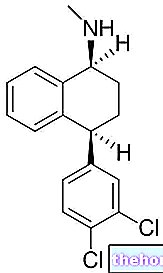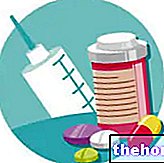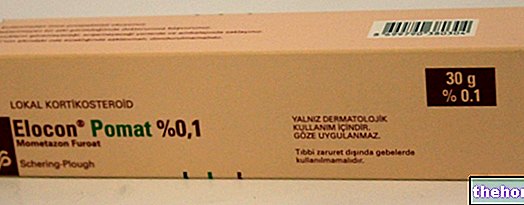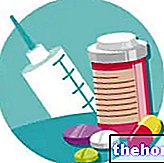PRENT ® is a drug based on acebutolol hydrochloride
THERAPEUTIC GROUP: Beta-blockers

Indications PRENT ® Acebutolol
PRENT ® is indicated in the treatment of essential arterial hypertension, coronary heart disease caused by chronic coronary insufficiency or heart attack (angina pectoris), and heart rhythm disturbances (tachycardia, extrasystoles, atrial fibrillation).
Mechanism of action PRENT ® Acebutolol
The acebutolol taken withPRENT ® is rapidly absorbed from the gastrointestinal tract, reaching its maximum plasma concentration after about 2 and a half hours from its ingestion. Once absorbed, 25% bound to plasma proteins, it is transported to the liver, where it undergoes a first pass metabolism, necessary to obtain diacetolol, a pharmacologically active metabolite. The therapeutic action of PRENT ® is mainly due to the cardioselective beta blocking activity of this molecule, which allows to minimize the risk of side effects, such as bronchus and vasoconstriction, possible following the inhibition of beta 2 adrenergic receptors.
The inactivation of cardiac beta 1 receptors, which manifests itself with high selectivity at therapeutic dosages, allows to slow down the heart rate at rest and during exercise (by modulating the sinus-atrial node automatism), and to reduce myocardial contractility in a proportional way activation of the sympathetic, thus ensuring a reduction in myocardial oxygen consumption, a slowdown in the conduction of the stimulus at the atrio-ventricular level and a reduction in the excitability of the myocardial mass.
These effects, also supported by an "intrinsic sympathomimetic activity (important in order to avoid manifest bradycardia), justify the therapeutic indications for which the drug PRENT ® is administered.
At the end of its therapeutic action, after a half-life of about 4 hours for acebutolol and 7 for diacetol, the drug is eliminated mainly through the faeces and only in small part through the urine.
Studies carried out and clinical efficacy
COMBINED THERAPY IN THE TREATMENT OF HYPERTENSION
Am J Cardiol. 1999 Jul 1; 84: 70-5.
Comparison of acebutolol with and without hydrochlorothiazide versus carvedilol with and without hydrochlorothiazide in black patients with mild to moderate systemic
hypertension.Radevski IV, Valtchanova SP, Candy GP, Tshele EF, Sareli P.
The study in question indicates that the use of acebutolol in monotherapy, in the treatment of hypertension in subjects of African ethnicity, cannot guarantee the achievement of adequate blood pressure levels. The results obtained with the concomitant administration of hydrochlorothiazide are decidedly better.
2. THE EFFECTS OF ACEBUTOLOL ON HEART PRESSURE AND RATE DURING EXERCISE
Effect of bisoprolol and acebutolol on resting blood pressure and on exercise blood pressure profile in hypertensive patients: a comparative, single-blind study.
Bouvier JM, Rabot D, Herrero G.
The study tested the effects of 8 weeks of treatment with 400mg acebutolol on heart rate and diastolic blood pressure in patients with moderate hypertension both at rest and under physical exertion. The results show a drop in heart rate of about 13% and a modest drop in diastolic pressure during exercise.
3.ACEBUTOLOL AND DOPING
J Forensic Sci. 2000 Jan; 45: 170-4.
Doping control for beta-adrenergic compounds through hair analysis.
Kintz P, Dumestre-Toulet V, Jamey C, Cirimele V, Ludes B.
The use of beta-blockers without an effective therapeutic indication has spread in sports practice (and in particular in concentration sports), in order to reduce some of the side effects of sympathetic hyperactivation that inevitably occurs in high-level competitions. a high-risk practice is considered doping and is fought with every effort by the judicial and sports authorities.
In addition to the classic cross-analysis (blood, urine), new molecular techniques have made it possible to identify the use of doping substances directly from the hair, making sampling simpler and faster.
Method of use and dosage
PRENT ® acebutolol 200/400 mg coated tablets: in the treatment of arterial hypertension, doses of 200 mg of acebutolol are used, taken with a little water before breakfast. This dosage can be increased up to 400mg daily, at which dose the desired hypotensive effect is generally recorded, or up to 800mg in case of insufficient therapeutic response. In all of the above cases, the choice of the correct dosage and therapy period should be carried out by the doctor after a "careful evaluation of the patient's physio-pathological conditions and his susceptibility to the drug.
The same discourse can also be extended to the treatment of coronary heart disease and heart rhythm disturbances, for which the recommended range remains between 200 and 600 mg of acebutolol per day.
IN ANY CASE, BEFORE TAKING PRENT ® Acebutolol - YOU NEED THE PRESCRIPTION AND CONTROL OF YOUR DOCTOR.
Warnings PRENT ® Acebutolol
Therapy with PRENT ® must necessarily be preceded and accompanied by a stringent and careful medical control. Monitoring of renal function should be carried out with particular care in patients suffering from various types of heart disease, in order to avoid a worsening of the state of health. renal glycemic control, on the other hand, should be maintained throughout therapy, especially in patients with diabetes, in order to avoid sudden drops in glycemic levels, masked by the negative chronotropic action of acebutolol.
Acebutolol could increase the sensitivity to allergens and make the related symptoms more clinically relevant; therefore, it would be advisable to evaluate the possible cost / benefit ratio in patients with allergic predisposition. The reduction of tear secretions observed in patients receiving acebutolol therapy could make it difficult to use contact lenses.
Should therapy be discontinued, it would be advisable, as with any other beta-blocker, to gradually reduce the dosage in order to avoid reactive side reactions.
The presence of dizziness and vertigo, especially felt in the initial phase of treatment or following dosage adjustment, could reduce the patient's perceptive abilities, making the use of machinery and driving vehicles dangerous.
PREGNANCY AND BREASTFEEDING
Although acebutolol does not appear to be toxic or teratogenic for the fetus, it is not recommended to take this active ingredient during pregnancy and especially during the first trimester. In case of irremediable necessity, the treating physician and the gynecologist should evaluate the relationship between the possible benefits that can be obtained and the potential risks to the health of the fetus. In any case, if PRENT ® is used during pregnancy, it is important to gradually discontinue therapy within the fourth week before delivery, in order to reduce the risk of hypotension, bradycardia, hypoglycemia and respiratory failure in the newborn during the birth. labor.
The presence of modest concentrations of the active ingredient in breast milk suggests the suspension of breastfeeding during any therapy with PRENT ®
Interactions
Given the masking action of acebutolol, it would be advisable, following constant monitoring of glycemic concentrations, to adjust the dosage of any hypoglycemic drugs taken, in order to avoid sudden drops in glycemic.
Acebutolol can interact with different drugs, accentuating the negative and hypotensive inotropic and chronotropic effects. More precisely, the concomitant administration of diuretics, calcium antagonists, vasodilators, barbiturates and tricyclic antidepressants could potentiate hypotensive episodes, while the concomitant administration of antiarrhythmics could be at the basis of an "altered modulation of the heart rhythm. Cardiac glycosides, reserpine, alpha methyl dopa, clonidine and MAO inhibitors can instead cause hypertension, counteracting the therapeutic effects of PRENT ®
It would also be advisable to gradually discontinue PRENT ® therapy before surgery, to prevent anesthetics or muscle relaxants from potentiating the negative inotropic and chronotropic effects of acebutolol.
Contraindications PRENT ® Acebutolol
PRENT ® is contraindicated in case of cardiogenic shock, hypotension, acute myocardial infarction, congestive and inadequately treated heart failure, acidosis, marked bradycardia, bronchopathies, SLE and hypersensitivity to one of its components.
PRENT ® should not be taken during the administration of MAO inhibitors or antiarrhythmics of various kinds.
Undesirable Effects - Side Effects
The undesirable effects observed following administration of PRENT ® are comparable to those described in general for the cardioselective beta blocker category.
The most common include asthenia, headache, nausea, vomiting, diarrhea, dizziness, cold extremities, also accompanied by bradycardia and hypotension.
Clinically more significant adverse reactions (increased transaminases, metabolic / nutritional disorders, bronchopathies) and worsening of symptoms in patients with particular conditions (Raynaud's syndrome, liver and kidney diseases), have rarely been observed following administration of acebutolol.
In a very small part of patients with impaired liver function, the appearance of antinuclear antibodies involved in a series of similar lupus-erythematosus reactions, which disappeared following discontinuation of therapy, was also observed.
Note
PRENT ® can only be sold under medical prescription.
The use of PRENT ® in athletes, in the absence of therapeutic need, to reduce the physiological response to stress and the related symptoms (tremor of the limbs, increase in blood pressure, increase in emotional tension, etc.) constitutes a DOPANTE practice.
The information on PRENT ® Acebutolol published on this page may be out of date or incomplete. For a correct use of this information, see the Disclaimer and useful information page.























-nelle-carni-di-maiale.jpg)




